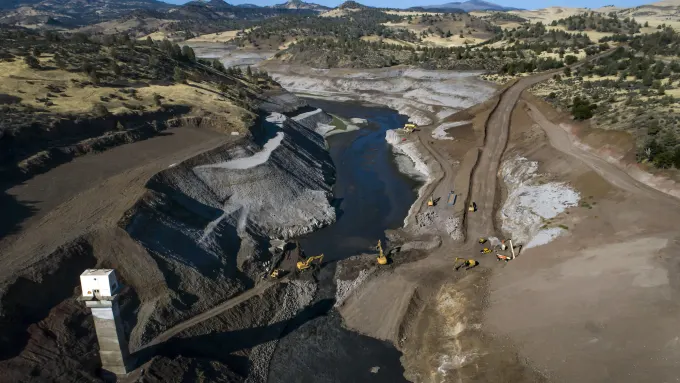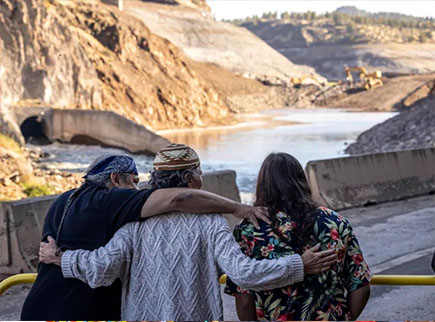The largest dam removal project in US history has been completed, marking a significant victory for Indigenous tribes and a major milestone in the restoration of the Klamath River. The removal of the four hydroelectric dams, which were built in the early 20th century without tribal consent, allows the river’s iconic salmon population to swim freely for the first time in over a century.
The project, overseen by the Klamath River Renewal Corporation, involved the demolition of the Iron Gate Dam, Copco Dams 1 and 2, and JC Boyle Dam. The removal of the dams was approved by federal regulators in 2022, and the smallest of the four dams, Copco No. 2, was removed the following year. Crews then began releasing water from the dams’ reservoirs at the beginning of this year, paving the way for the final demolition.
The Klamath River has been at the center of controversy in recent years, with a historic drought pitting local farmers against Indigenous tribes, government agencies, and conservationists. However, the completion of the dam removal project has brought joy and relief to the Indigenous people who have lived along the river for centuries.
The Yurok Tribe, known as the “salmon people,” considers the salmon a sacred species that is central to their culture, diet, and ceremonies. The removal of the dams means “freedom” and the start of the river’s “healing process,” according to Amy Bowers-Cordalis, a member of and general counsel for the Yurok Tribe.

The dams had severely disrupted the lifecycle of the salmon, blocking them from accessing their historic spawning grounds. The removal of the dams will help restore the river’s natural flow and improve water quality, benefiting not only the salmon but also other species that depend on the river.
While the dam removal project has raised concerns about water quality, experts say the benefits far outweigh the short-term challenges. The removal of the dams will not significantly impact the power supply, as they produced less than 2% of PacifiCorp’s energy.
The next phase of the project involves restoration work, including the planting of native species and habitat restoration. The ultimate goal is to restore the Klamath River to its natural state, ensuring the long-term sustainability of the ecosystem and the communities that depend on it.
The completion of the dam removal project marks a significant step towards reconciliation and recognition of Indigenous rights. It acknowledges the historical injustices faced by Indigenous communities and paves the way for a more sustainable and equitable future

